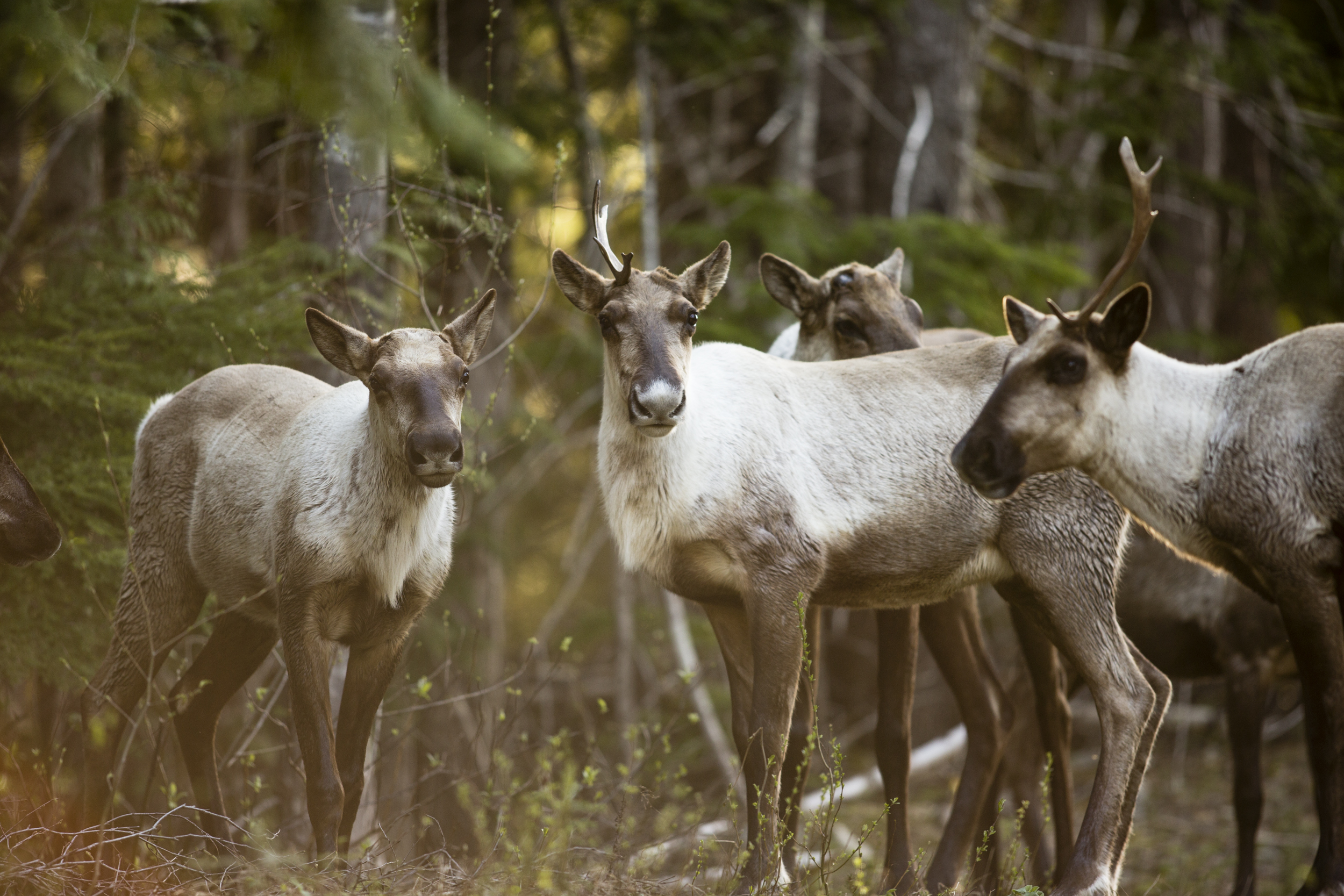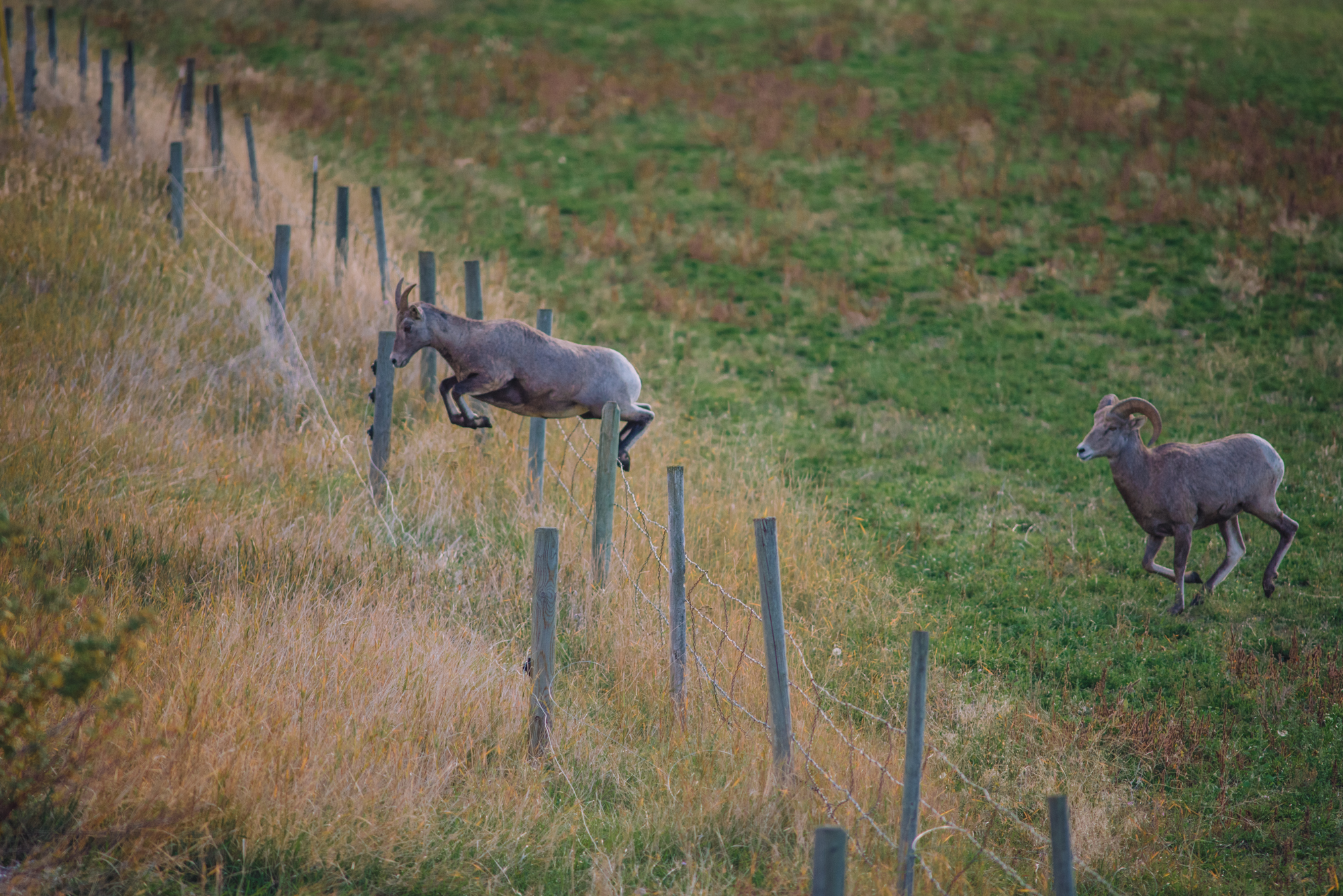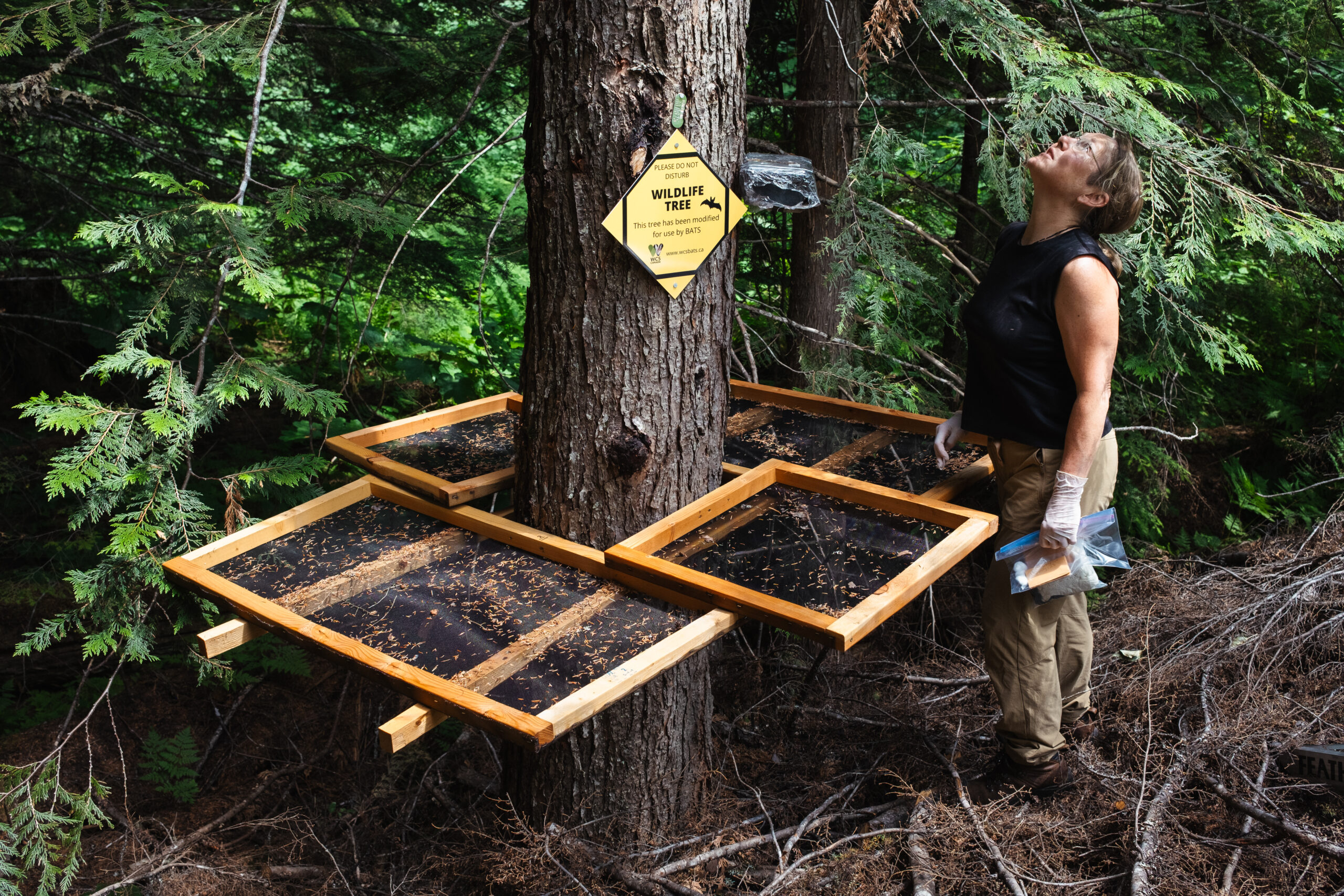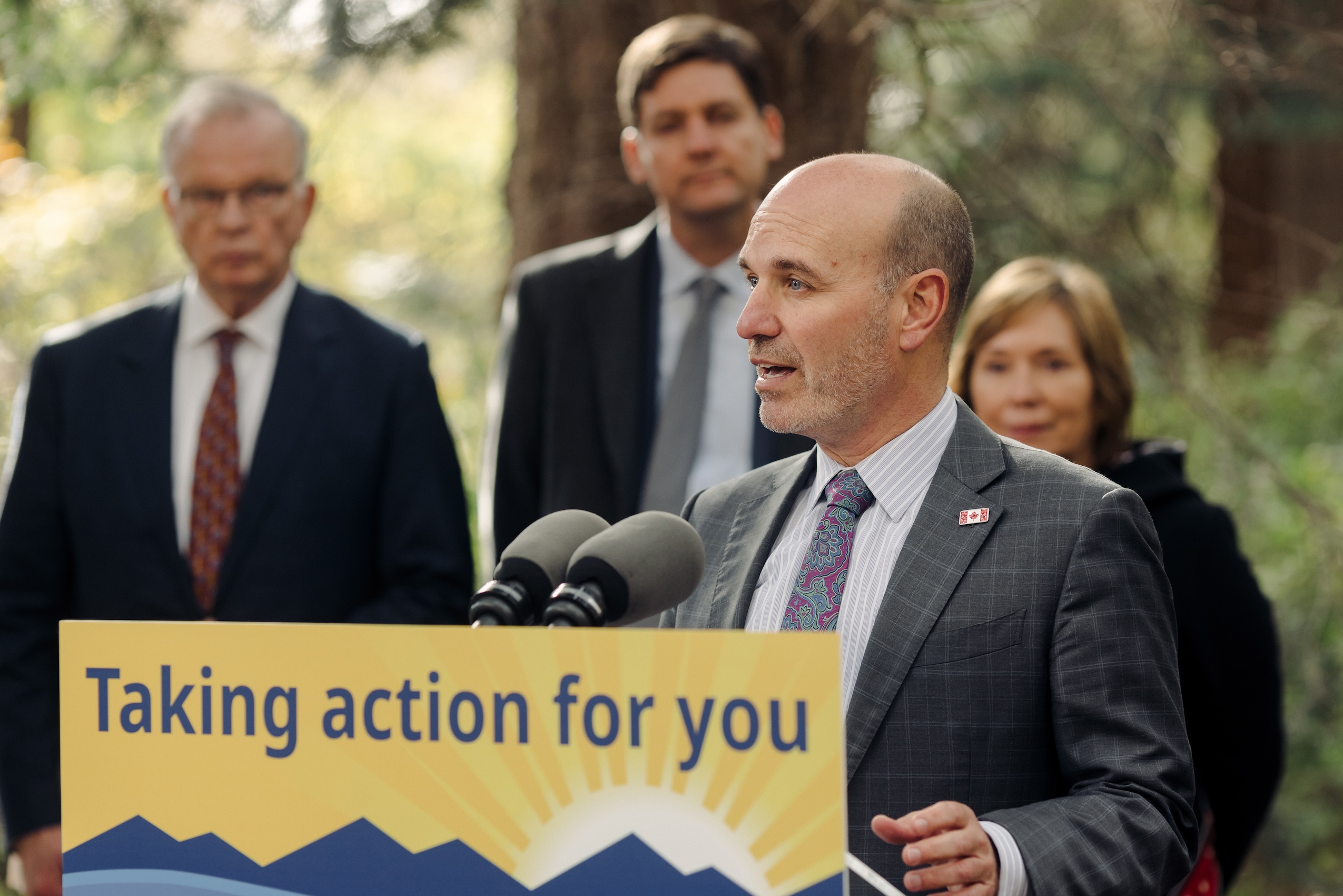
Bill 5: a guide to Ontario’s spring 2025 development and mining legislation
The public has a few days left to comment on Doug Ford’s omnibus development bill....
Provincial wildlife staff are operating in “triage” mode as they struggle to manage a range of growing threats to wildlife and biodiversity under the constraints of a “cash-strapped” Ministry of Water, Land and Resource Stewardship, the B.C. Wildlife Federation is warning.
“Provincial government fish and wildlife programs are in crisis,” the federation said in a press release today, adding government biologists feel “completely abandoned” and staff are “demoralized.”
To save costs, the ministry has cut funding for some wildlife programs, restricted staff travel and, in some cases, directed staff to turn in their government cell phones, according to Jesse Zeman, the federation’s executive director.
While the ministry declined to discuss details of its wildlife funding challenges, Zeman said bighorn sheep disease monitoring in the Okanagan region is among the affected programs.
The wildlife federation also raised concerns the government’s caribou recovery program is more than $2 million short of its $10-million budget, which is meant to cover monitoring, research, habitat restoration and predator control efforts.
And, in at least some regions, contracts for compulsory hunting inspectors have been reduced or cut altogether.

While the full extent of the ministry’s shortfall remains murky, Zeman estimates it’s “well north of $10 million.”
“That ministry is now having to make really hard choices because they don’t have the budget that they should have,” he said in an interview with The Narwhal.
In an emailed response to questions from The Narwhal, a spokesperson for the Ministry of Water, Land and Resource Stewardship, said its budget hasn’t changed since it was tabled in the spring, but noted “emergent issues such as landslides, drought, chronic wasting disease and others affect budget allocations above and beyond core operations.”
The ministry did not answer The Narwhal’s questions about the extent of staff travel restrictions, how many staff have been told to turn in cell phones or how much funding has been dispersed through the ”together for wildlife” strategy, which aims to improve wildlife habitat and stewardship, or through another major funding pot called the land-based investment strategy, which aims to conserve the province’s natural resources.
Instead, the spokesperson provided general comments, noting “fish and wildlife teams are experiencing adjustments as part of the 2023 reorganization,” which saw responsibility for implementing B.C.’s Wildlife Act shift from the Ministry of Forests to the Ministry of Water, Land and Resource Stewardship.
In response to The Narwhal’s questions about the budget shortfall for the caribou recovery program, the spokesperson said “projects that offer the greatest benefit for recovering threatened caribou populations have been prioritized,” adding the province has allocated sufficient funding to deliver on priorities.
The B.C. Wildlife Federation has repeatedly raised concerns about shrinking renewable resource budgets, but the group says fish and wildlife programs are now in “crisis.”
“I didn’t think it could get any worse,” Zeman said. But “it’s worse.”
The funding challenges have become more pronounced since the responsibility for fish and wildlife programs was transferred from the Ministry of Forests to the relatively new Ministry of Water, Land and Resource Stewardship, Zeman said.
“When the fish and wildlife branch was within the Ministry of Forests, they were able to paper over some of the budget shortfalls by using ministry contingency funds, but those funds are no longer available,” Zeman said in the press release.
“[The Ministry of Forests] recognized that fish and wildlife operations were chronically underfunded and did what they could to fill the gaps. That is no longer happening,” he said.
“What’s going on has literally destroyed the morale in the fish and wildlife branch,” Zeman added.
In the release Wednesday the federation warned “demoralized staff are quitting or taking extended leaves of absence, which has left some regional offices almost entirely unstaffed.”
“The Okanagan office used to have four fisheries biologists and three wildlife biologists, but now has only one wildlife and one fisheries biologist left,” Zeman said in the release.
The province allocated $214 million to the Ministry of Water, Land and Resource Stewardship in its fiscal budget ending in 2025. That’s significantly less than it needs to address the myriad threats to fish, wildlife and ecosystems, according to Zeman.
In the previous fiscal year, the government bolstered the ministry’s initial budget allocation of $124 million with $314 million in additional funding authorizations, according to public accounts.
This year’s budget is less than half what the ministry spent in the previous fiscal year.
And since the budget was tabled in February, the province has committed to unanticipated and costly measures to manage emerging threats to wildlife. Those measures include mandatory testing for chronic wasting disease — a fatal and contagious neurological disease — for all deer, elk and moose harvested in the Kootenay region, where the first positive cases were detected in January.
Chronic wasting disease, invasive mussels and whirling disease — caused by a parasite that can lead to spinal deformities and death in trout and salmon — are all “a huge threat,” Zeman said. “The province needs to be stepping up.”
But without more funding, “essentially, we’re stealing from Peter to pay Paul,” Zeman said.
“And, through this triage approach other projects will not get funded.”
The ministry said its budget for chronic wasting disease monitoring and management is $741,000.
“Multiple strategies are employed to manage within a ministry’s budget,” the spokesperson said.
The bighorn sheep disease monitoring is among those projects losing provincial funding support despite growing risks to the sheep populations.
A February 2023 briefing document The Narwhal obtained through a freedom of information request shows a provincial wildlife biologist alerted senior government officials that an outbreak of mites and other infectious diseases had caused major declines in bighorn sheep in the Okanagan region.
In the document, called an “early warning note,” the biologist explained ministry staff had been working with the Okanagan Nation Alliance and First Nations communities since 2020 to monitor the impact of disease on bighorn sheep and develop a management plan for the region.
Bighorn sheep populations on the west side of the Okanagan Valley, infected with mites that cause a skin disease called mange, declined by 50 per cent between 2011 and 2023, according to the early warning note.

Meanwhile, bighorn sheep populations on the east side of the valley have been affected by outbreaks of bluetongue virus, which, in sheep, can lead to a swollen and purple tongue, difficulty breathing and death as well as a bacterium that can cause a deadly form of pneumonia.
Between 2020 and 2023, infectious diseases caused the bighorn sheep population in the South Okanagan to decline 30 per cent, the biologist wrote in the early warning note.
In a further blow, the mange-causing mites were also detected in the eastern herd in early 2023.
“Wildlife staff anticipate this outbreak may create additional challenges for an already stressed, culturally and economically significant species,” the biologist warned.
Despite these warnings, Zeman said it appears the ministry is no longer providing financial support for efforts to manage the spread of infectious diseases in bighorn sheep.
“The challenge with the pneumonia is that it can linger in the population for decades,” Zeman said. Even if adult females survive the infection, they may pass it along to their lambs.
“As soon as the lambs are weaned, they die from the disease,” he said.
According to the B.C. government’s website, there is no effective treatment or vaccine for the bacterium. Currently, the best option for controlling the spread of the disease is for each sheep to be tested for the bacterium and to euthanize any that test positive, Zeman explained.
“That’s the only treatment and it costs a lot of money.”
The ministry did not explain why the provincial government is no longer providing funding for bighorn sheep monitoring in the Okanagan in its emailed response to questions from The Narwhal.

Biologists focused on disease surveillance in bats are also facing challenges.
Cori Lausen, the director of bat conservation for the Wildlife Conservation Society Canada, told The Narwhal in an email that samples collected in the spring to test for white nose syndrome — a deadly disease that’s killed millions of bats across North America — “are still sitting in a government freezer.”
“They do not know when or if they will be processed yet this fiscal [year],” she said. “The fungus could be spreading in southern B.C., but we will not be able to respond accordingly until the samples are processed.”
The ministry spokesperson said the government waits until all guano samples have arrived at the lab before testing. The last set of samples is set to arrive this week and testing is expected to take place at the end of September, with results by late November, the spokesperson said.
“Depending on budget and number of samples, only samples from priority areas may be tested,” the spokesperson said. The ministry did not say which areas would be prioritized or how many samples would be tested this year.
In at least some areas, funding has also been reduced for compulsory hunting inspection contracts, according to Greg Hoyer, a retired B.C. conservation officer who has been a contract inspector for the provincial government for the past decade.
The B.C. government requires hunters to ensure certain species, including caribou, mountain sheep and, in some regions, elk are examined by government-approved inspectors. For a stone sheep, for instance, the hunter is required to bring the horns and an incisor tooth to an inspector for review, Hoyer said.
The inspector will confirm the sheep meets the legal age or horn size requirements for hunting. They’ll also record the exact location where the animal was harvested and collect a DNA sample from the horns to be analyzed alongside the sheep’s incisor tooth, Hoyer explained.

“From a wildlife point of view, it’s very important,” he said, noting government biologists use the information collected as part of these inspections to help manage wildlife populations.
Hoyer said he was recently informed that three contractors who did inspections for the Thompson and Okanagan regions no longer had contracts. Hoyer, who is based in Kelowna, said he was informed he was the lone contractor being kept on in the region, and was told by ministry staff that they weren’t sure how long they’d be able to keep him on either.
“There is a serious problem with funding of the wildlife branch,” Hoyer told The Narwhal.
“If there was permanent funding, this would never be an issue,” he said. “They would have a budget, and they would be able to plan.”
The ministry did not answer a question about funding cuts for hunting inspectors.
Concerns around a dearth of provincial funding for some wildlife projects come at a pivotal moment for nature in B.C. and around the world. Globally, about one million species are at risk of being wiped out, according to a 2019 United Nations biodiversity assessment.
In B.C. about 1,950 species and ecological communities — from northern leopard frogs, to desert night snakes and southern mountain caribou — are at some risk of extinction in the province, according to the B.C. government’s conservation data centre.
Last November, Nathan Cullen, Minister of Water, Land and Resource Stewardship, stood beside Premier David Eby and federal Environment Minister Steven Guilbeault in Vancouver and promised $1 billion in joint federal-provincial funding for a tripartite agreement with First Nations to conserve and restore nature.
“It’s been said that B.C. has the greatest biodiversity of any region in our country,” Cullen commented against the backdrop of Burrard Inlet and the North Shore mountains. “That also means we have the greatest responsibility to protect what we cherish so much.”
While the spokesperson for the Ministry of Water, Land and Resource Stewardship said B.C.’s financial commitments under the nature agreement haven’t changed, funding for wildlife has been a longstanding issue in B.C.
Zeman, who has analyzed B.C.’s renewable resource management funding since the mid-1970s, said the money earmarked for air, water, land, forest and fish and wildlife issues has declined significantly from around four to five per cent of the provincial budget through the 1970s, 1980s and 1990s to less than one per cent of the provincial budget this year.
With the writ for the provincial election expected to drop on Sept. 21, Zeman said the B.C. Wildlife Federation is calling for all political parties to commit to greater levels of dedicated funding for renewable resource management in B.C. In particular, the federation is calling for $200 million to be allocated to fish and wildlife programs alone.
“I think people who live in British Columbia live here because they like to connect with nature. They like to go down to their local river, to their local park and they like to go hiking and hunting and fishing and all of those things,” Zeman said. “The question for people is, ‘Are you okay with the province of B.C. spending less than one per cent of the provincial budget to take care of these things?’ ”
Corrected on Sept. 19, 2024, at 10:44 a.m. PT: This story has been update to correct the spelling of federal Environment Minister Steven Guilbeault’s name.
Updated on Sept. 20, 2024, at 12:35 p.m. PT: This story was updated to add responses from the B.C. government that were received following publication.
Get the inside scoop on The Narwhal’s environment and climate reporting by signing up for our free newsletter. On a warm September evening nearly 15...
Continue reading
The public has a few days left to comment on Doug Ford’s omnibus development bill....

115 billion litres, 70 years to fix, $5.5 billion in lawsuits

Climate change, geopolitics and business opportunities power a blue economy
